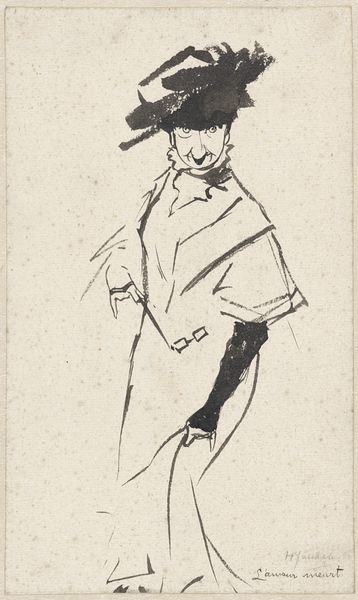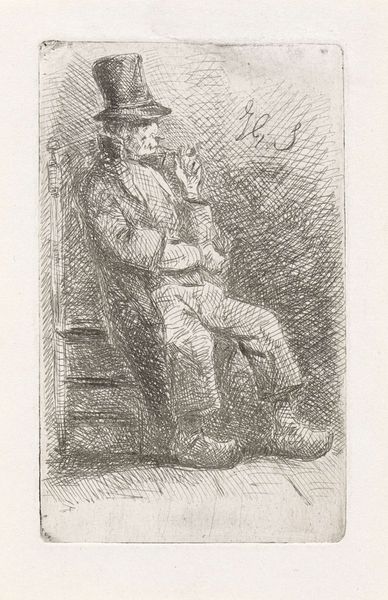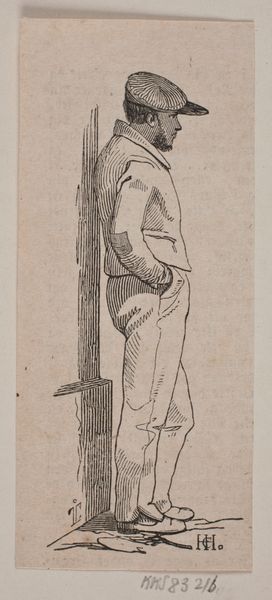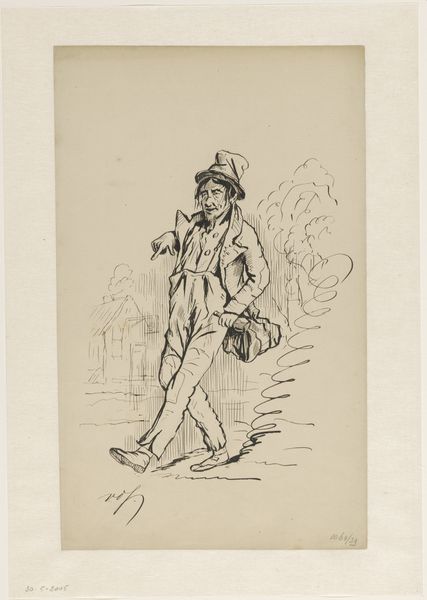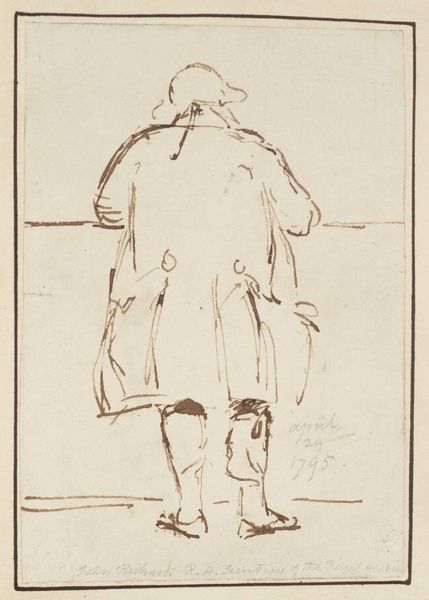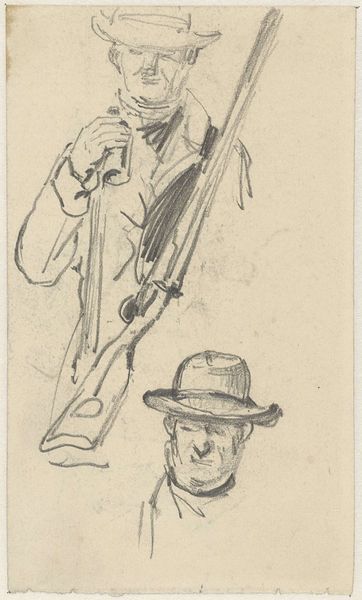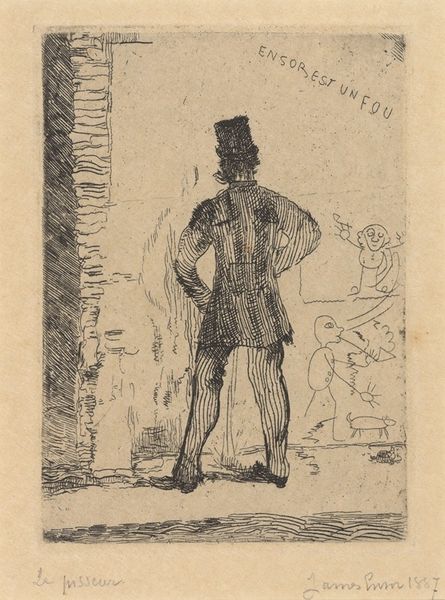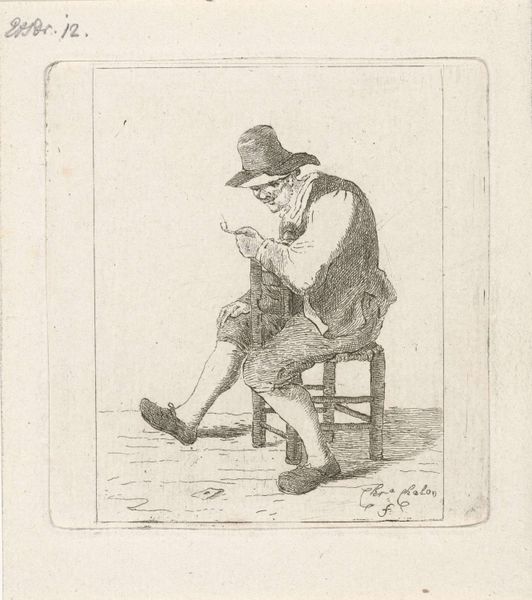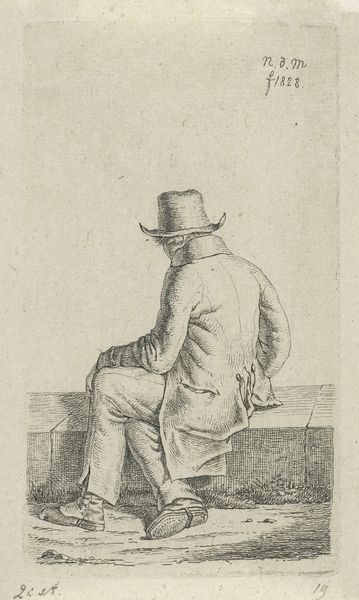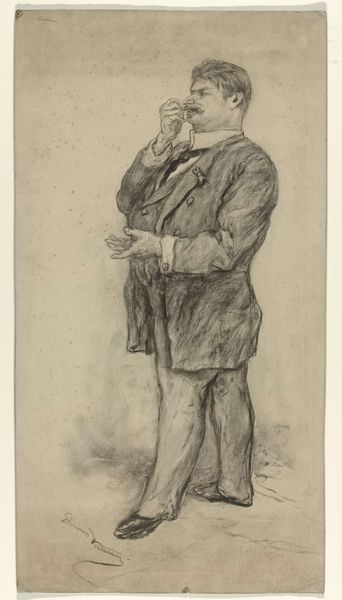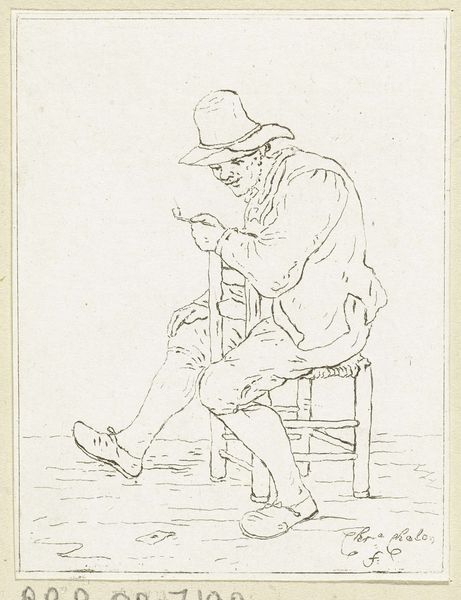
drawing, print, etching
#
portrait
#
drawing
# print
#
impressionism
#
pen sketch
#
etching
#
pencil sketch
#
figuration
#
ink drawing experimentation
#
pen-ink sketch
#
sketchbook drawing
#
realism
Dimensions: 16 x 12 cm
Copyright: Public domain
Editor: This is Paul Cézanne's etching, "Guillaumin with the Hanged Man," from 1873. It's a striking portrait, but with this unsettling image in the top left corner. What's your take on this work, considering the socio-political implications? Curator: A fascinating question. The presence of a hanged man certainly casts a shadow, doesn't it? Beyond the personal depiction, this etching speaks volumes about the anxieties simmering beneath the surface of 19th-century French society. Cézanne created this shortly after the Franco-Prussian War and the Paris Commune. Do you think that historical backdrop affects the work's impact? Editor: Absolutely. Knowing that context changes everything. It suggests a critique of power, perhaps, or a commentary on the consequences of political turmoil, where society, or at least some individuals within it, feels confined. It's interesting he includes Guillaumin himself – he appears unaffected, perhaps even complacent? Curator: Precisely. The juxtaposition is key. Guillaumin, also an artist, is presented in a seemingly comfortable pose, yet the hanged man looms over him, a symbol of justice gone awry or perhaps a warning. This speaks to how artists navigate complex, sometimes oppressive environments and to what extent one involves themselves in the socio-political circumstances of the time. Is this about artistic solidarity or passive resignation? What statement is Cézanne attempting to communicate? Editor: I never thought of it that way, focusing on Cézanne’s statement about political responsibility through Guillaumin's relaxed attitude in contrast to the stark image of violence, such an intentional display in art from that period. It also makes me wonder, what could this imagery indicate about what was acceptable to put in artwork and what was censored or excluded. Thanks for opening my eyes to new interpretations. Curator: Indeed. Considering the artist's role within a broader sociopolitical landscape unveils richer meanings in art, I find, beyond initial impressions and surface appearances. It invites us to contemplate power dynamics and resistance, even within a seemingly simple portrait.
Comments
No comments
Be the first to comment and join the conversation on the ultimate creative platform.
